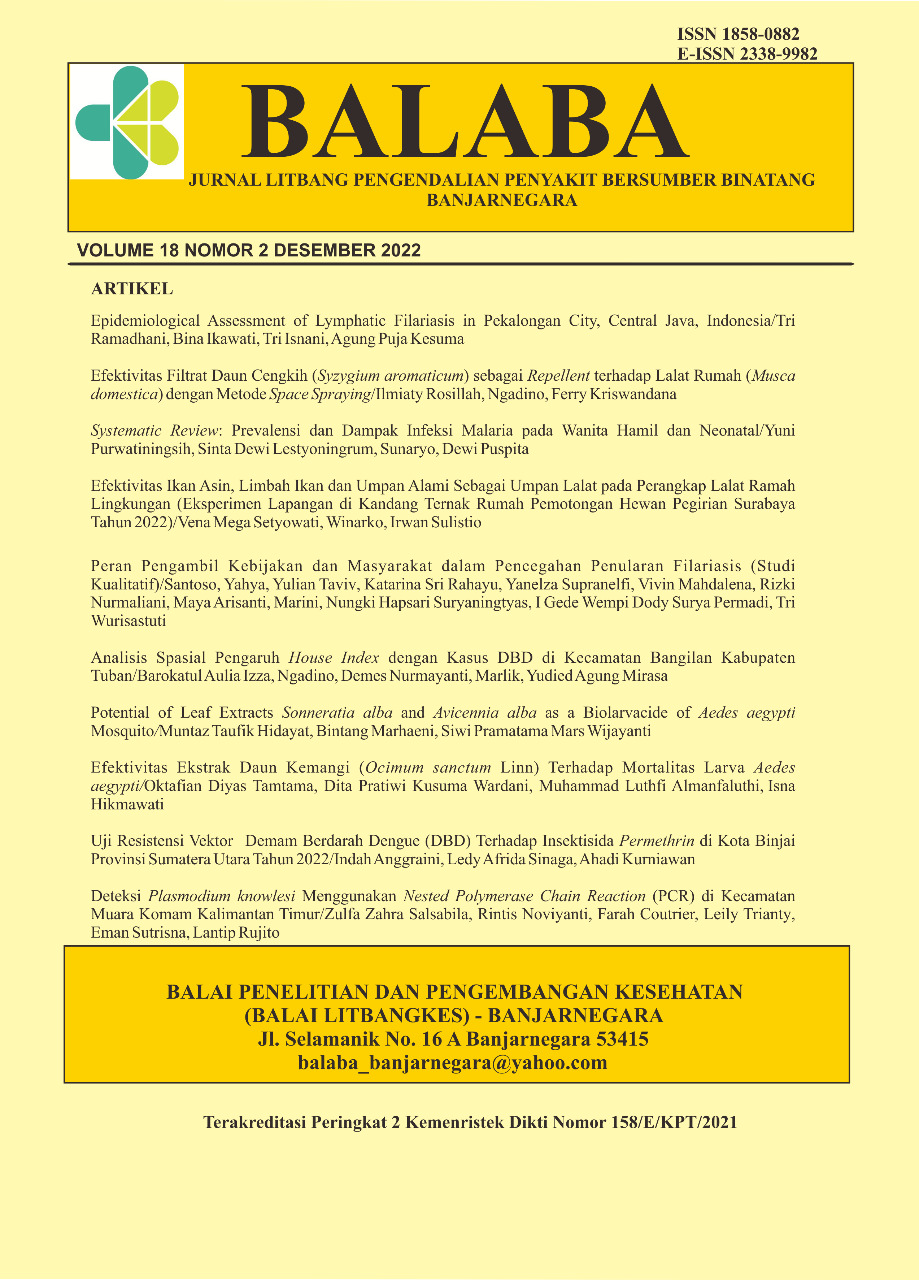Epidemiological Assessment of Lymphatic Filariasis in Pekalongan City, Central Java, Indonesia
Keywords:
lymphatic filariasis, sociodemography, descriptive epidemiologyAbstract
Lymphatic filariasis is an infectious disease caused by filarial worms and transmitted by mosquitoes. Pekalongan City is the highest filariasis endemic area caused by Wuchereria bancrofti in Central Java. This is indicated by the microfilaria rate of 2.8% in 2016. To reduce the number of filariasis cases, mass drug administration has been carried out since 2011. The aim of the study was to describe the epidemiology of the distribution of filariasis endemic areas, microfilaria rate, treatment coverage. mass and the correlation of sociodemographic factors with the incidence of filariasis. The research variables used secondary data in the form of filariasis cases, education, population density, gender and land use. Data analysis used Spearman's correlation. The results showed that cases of filariasis were spread across all districts with an increasing number of endemic areas during 2011-2016. Efforts to mass treatment have not been successful (mf rate > 1% and treatment coverage < 65%) and must be repeated in 2017-2019. Sociodemographic factors were not related to the incidence of clinical or chronic cases of filariasis. To accelerate the achievement of filariasis elimination, it is necessary to add vector control efforts in integrated filariasis management.


